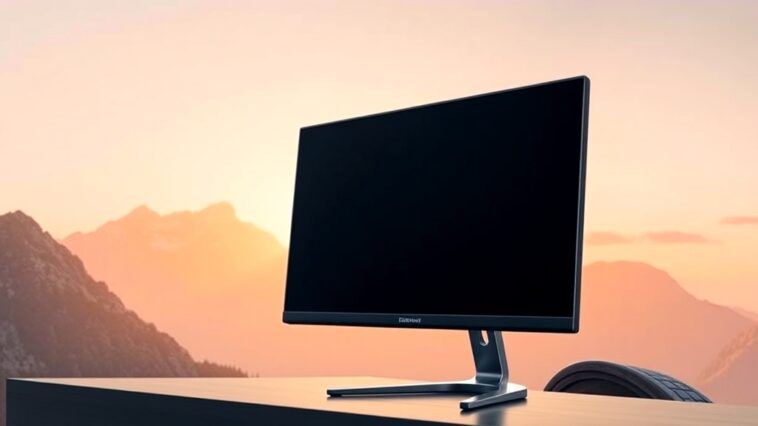Are you wondering if investing in a 144Hz monitor is the right choice for you? Or maybe you’re just curious about what all the hype is about? Well, you’re in the right place! In this guide, we’ll explore everything you need to know about 144Hz monitors, including their advantages, how they compare to 60Hz monitors, and whether they’re worth the investment.
Understanding Refresh Rates
What is Refresh Rate?
The refresh rate of a monitor, measured in Hertz (Hz), refers to how many times per second the display updates with new information. For example, a 60Hz monitor refreshes 60 times a second, while a 144Hz monitor refreshes 144 times per second. This difference can significantly impact your viewing experience, especially when it comes to gaming and fast-moving content.
The Benefits of Higher Refresh Rates
- Smoother Motion:
- Higher refresh rates make motion look smoother. This is especially noticeable in fast-paced games, where quick movements can be crucial.
- Imagine playing a racing game. On a 60Hz monitor, the visuals may appear choppy, making it harder to navigate sharp turns. On a 144Hz monitor, the same game feels more fluid and responsive.
- Improved Responsiveness:
- With a higher refresh rate, the delay between your input (like moving your mouse or pressing a button) and the action on screen is reduced.
- In competitive gaming, this responsiveness can be the difference between winning and losing.
- Reduced Motion Blur:
- Motion blur occurs when fast-moving objects leave a trail on screen. A higher refresh rate helps mitigate this effect, allowing for clearer visuals during rapid movements.
- Picture a basketball player sprinting across the court; on a 144Hz monitor, you can see them clearly without blurring.
- Better Gaming Experience:
- Gamers often rave about how once you try a 144Hz monitor, it’s hard to go back to 60Hz. The overall experience feels more engaging and immersive.
Is a 144Hz Monitor Worth It?
Now that we have a basic understanding of refresh rates, let’s dive deeper into whether a 144Hz monitor is the right choice for you.
Performance in Gaming
When it comes to gaming, the advantages of a 144Hz monitor become incredibly apparent. Here’s how:
- First-Person Shooters (FPS):
- In FPS games, every millisecond counts. You need to react quickly to opponents. A 144Hz monitor allows you to see fast movements and respond accurately, potentially improving your kill/death ratio.
- For instance, if you’re playing a game like Call of Duty, spotting an enemy and shooting them first can be crucial. A 144Hz monitor makes it easier to track their movements.
- Fast-Paced Action Games:
- Games like Fortnite or Apex Legends benefit immensely from higher refresh rates. The smoother transitions and reduced motion blur can enhance your gameplay significantly.
- Imagine building a structure quickly while under fire. The clearer visuals on a 144Hz monitor can help you make split-second decisions.
- Racing Games:
- If you love racing games, a 144Hz monitor can make the experience much more enjoyable. The fluidity of motion helps you navigate tracks with greater precision.
- Think about it: racing around a corner feels much better when you can see every detail without lag.
How Does It Compare to 60Hz?
So, is it worth switching from a 60Hz to a 144Hz monitor? The answer often depends on your needs and usage:
- For Casual Use:
- If you primarily use your computer for browsing, watching videos, or casual gaming, a 60Hz monitor might suffice. The difference may not be as noticeable in slower-paced scenarios.
- However, scrolling through web pages or moving your mouse feels smoother on a 144Hz monitor.
- For Competitive Gaming:
- If you’re serious about gaming, especially in competitive environments, a 144Hz monitor is highly recommended. The smoother experience and improved response times can give you a significant edge.
- Many professional gamers use high refresh rate monitors to maximize their performance.
- Price Considerations:
- Nowadays, the price difference between 144Hz and 60Hz monitors isn’t as large as it used to be. You can find decent 144Hz monitors at prices comparable to 60Hz models.
- Investing in a 144Hz monitor now can future-proof your gaming setup as more games and applications take advantage of higher refresh rates.
What About Screen Tearing?
Screen tearing is another issue that can affect your gaming experience. It occurs when your monitor’s refresh rate and your graphics card’s frame rate are out of sync. This can lead to choppy visuals and a distracting experience.
- How 144Hz Helps:
- A higher refresh rate reduces the chances of screen tearing, making your gaming experience smoother.
- Technologies like FreeSync and G-SYNC can further enhance this by synchronizing the monitor’s refresh rate with the graphics card’s frame rate.
The Importance of FPS
To fully utilize a 144Hz monitor, your graphics card (GPU) needs to output frames at a high rate. This means:
- Strong GPU Required:
- To take advantage of a 144Hz monitor, you should have a capable GPU that can consistently run games at high frame rates (FPS).
- If your GPU can only produce around 60 FPS, you won’t see the full benefits of a 144Hz monitor.
- Balancing Performance:
- It’s essential to balance your GPU performance with your monitor’s refresh rate. If you’re investing in a 144Hz monitor, consider upgrading your GPU as well.
Other Factors to Consider
When deciding on a monitor, several other factors come into play:
- Response Time:
- A monitor’s response time measures how quickly it can change the color of a pixel. For gaming, a response time of 1ms or lower is ideal to avoid ghosting and blurring.
- Lower response times allow for clearer images during fast motion, enhancing your gaming experience.
- Resolution:
- While refresh rate is essential, so is resolution. A higher resolution (like 1080p or 1440p) can provide better detail in games, but you want to ensure your monitor also supports a high refresh rate.
- Ideally, you want a monitor that offers both high resolution and high refresh rates for the best experience.
- Panel Type:
- The type of panel (TN, IPS, or VA) affects color accuracy and viewing angles. TN panels often have faster refresh rates but poorer color reproduction compared to IPS panels.
- If color accuracy is crucial to you, consider an IPS panel with a 144Hz refresh rate.
- Variable Refresh Rate Technologies:
- Features like FreeSync and G-SYNC help eliminate screen tearing and provide smoother gameplay. If you’re investing in a 144Hz monitor, look for one that supports these technologies.
The Bottom Line
In conclusion, a 144Hz monitor is often worth the investment, especially for gamers and those who value smooth motion and responsiveness. If you’re serious about gaming, the benefits of a higher refresh rate can enhance your experience significantly.
Think about your current setup. Are you struggling with screen tearing or choppy visuals? Or perhaps you want to elevate your gaming performance? A 144Hz monitor could be the solution you’ve been searching for.
Personal Experience
Let me share a personal story. When I made the switch from a 60Hz to a 144Hz monitor, it felt like a game changer. I noticed smoother gameplay in my favorite FPS games, which allowed me to react quicker to opponents. It not only enhanced my gaming experience but also improved my performance in competitive play.
If you’re still on the fence, I encourage you to try playing on a 144Hz monitor. You might be surprised at how much of a difference it makes!
Final Thoughts
Choosing the right monitor can feel overwhelming, but understanding refresh rates and their benefits is a great start. Whether you’re a casual user or a hardcore gamer, knowing what to look for will help you make an informed decision.
So, is a 144Hz monitor worth it? Based on what we’ve discussed, the answer is likely yes! Happy gaming!




